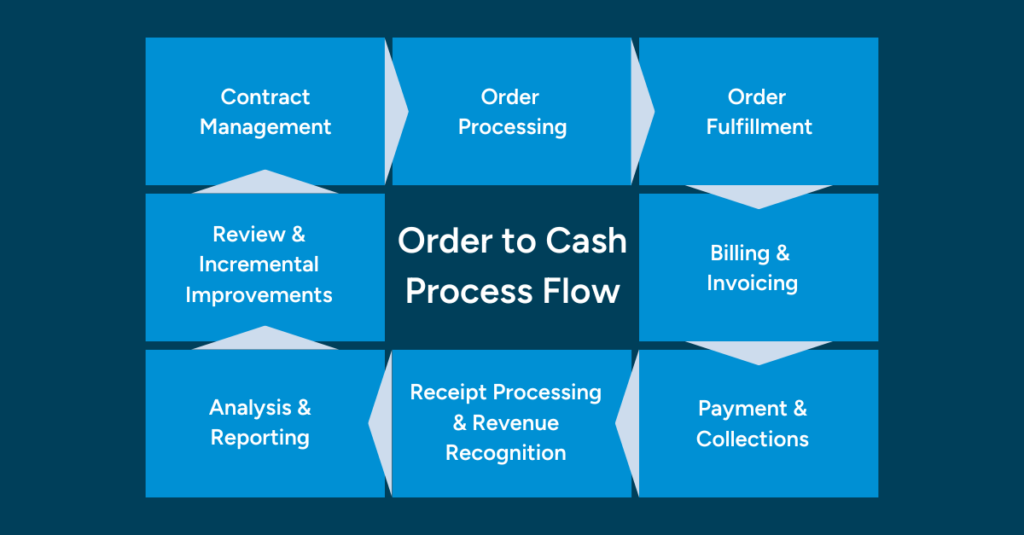
The Order to Cash (O2C) process is a series of steps within a business that starts with a customer placing an order and ends with the company receiving payment for the goods or services provided.
How the O2C process works
The O2C process can be broken down into the following key steps:
Contract Management & Order Processing
Once a customer accepts a quote or contract, a sales order is created and legal processing begins. In this step, customers also should be able to amend their data, plans, upgrades, or downgrades which are then reflected in order fulfillment. This is managed in self-service portals that can be configured with subscription management software.
Shipping and order fulfillment
After the sales order is in the system, products or services are delivered, either physically or digitally (referred to as goods issue in the digital economy).
Invoicing, payments, and collection
In modern O2C processes, a billing automation system sends an invoice directly after the customer receives the product or service, payment is received in accordance with the invoice terms, and where necessary, manages the collection process. A tool for vendor-side payment management is used to configure what payment gateways and methods are available, and in which situations, to best fit customer needs.
Revenue Recognition
Confirmed payment is recorded and the revenue is recognized in accordance with the relevant accounting standards (like ASC 606 or IFRS 15). It is important this feature is available as part of a larger tax and accounting configuration engine.
Analysis & Reporting
After the completion of the O2C process, collected data can be analyzed and reports can be generated to determine potential areas of improvement in the overall process.
In General, these key steps can be segmented slightly differently, but the overall O2C process always follows the same pattern of:
Contract Management -> Order fulfillment -> Billing & Invoicing -> Payment & collections -> Rev Rec -> Analysis and incremental improvements (not essential to complete the customer-side O2C process, but incredibly useful for internal improvements).

